Are you interested in adding a bit of character to your outdoor space? Whether you’re looking for a more permanent solution or are just seeking out refreshing ideas for the garden, cement is an easy way to transform any outdoor area.
From creative planters and benches to waterproofing projects, this versatile material can offer a range of possibilities when it comes to making over your garden.
In this blog post, we’ll explore some exciting and inspiring ideas for cement-based projects so that you can create an eye-catching piece that is sure to be the envy of your neighbours!
Cement Ideas for Garden
Concrete Yard Word Art
One of the most creative and eye-catching cement ideas for gardens is to use it as a medium for making word art. You can easily craft shapes and letters out of concrete, which you can then paint or stain in any colour that suits your taste.
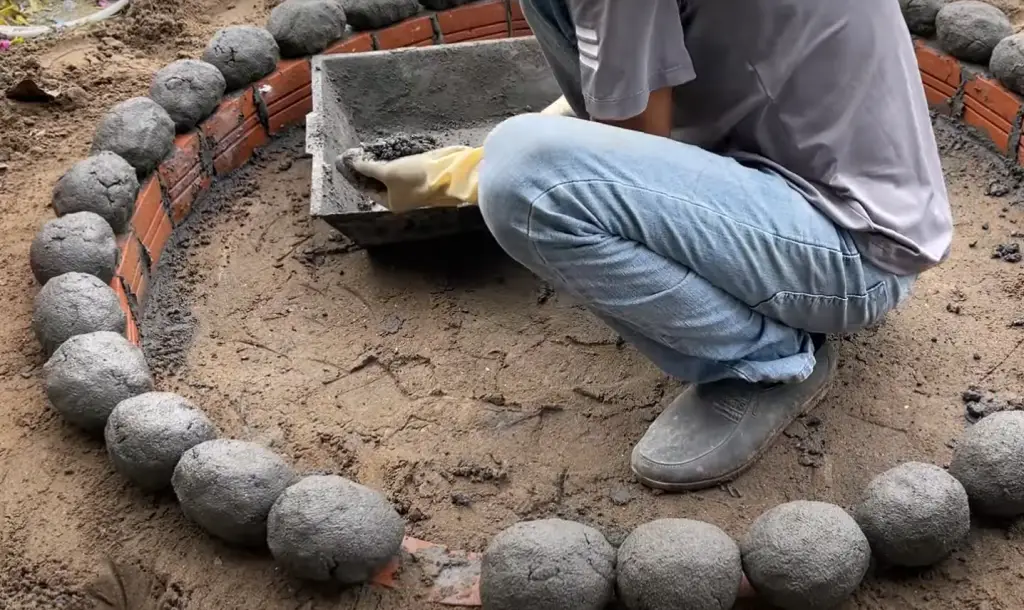
Whether you spell out something meaningful like a favourite quote or simply add some cheerful words, it’s an easy way to add a unique touch that is sure to dazzle your visitors.
Concrete Beverage Cooler
If you’re looking for a unique way to keep your drinks cool on hot summer days, why not consider making a concrete beverage cooler? All you need is some cement and a mould, which can be easily made with plywood or plastic.
You can then fill the mould with cement and let it dry before adding a few handles or other details.
Concrete Hand Planters & Bowls
For a truly one-of-a-kind planter bowl or hand planter, you can use cement to create something totally unique. This is a great way to showcase seasonal plants and add a splash of life to any outdoor space.
All you need is a mould (which can be easily made with wood or plastic) and some cement mix. Once you’ve created your planter, you can add a few choice plants to give it the perfect finishing touch.
Leaf-Shaped Stepping Stones
Make your outdoor area look cool with stepping stones shaped like leaves. Use cement to make them and paint or stain them in any colour you want.
You can pick a bright, happy colour or something more quiet. This is an easy way to make a special path that will look unique.
Modern Outdoor Bench from Concrete
If you’re looking for a statement piece to finish off your outdoor space, then why not consider making a modern bench from concrete? This is an easy project that can be done in just a few hours and the results will be sure to impress.
All you need is some cement and a mould. Once it’s dry, you can add some paint or stain to give it a striking finish.
Cheap Concrete Planters
If you’re looking to add a bit of greenery to your outdoor space with minimal effort and cost, then why not consider making some cheap concrete planters?
You can then fill it up with the mix, let it dry, and then add your plants. Simple but effective!
Concrete Table Numbers
If you have a lot of people coming to your party, you can make numbers for each table using concrete. You will need a cement mix, a mould made with wood or plastic, and some paint or stain. After the numbers are dry, put one on each table to make it look special.
Concrete Pumpkins
All you need is a mould, some cement mix and a few plastic pumpkin shapes.
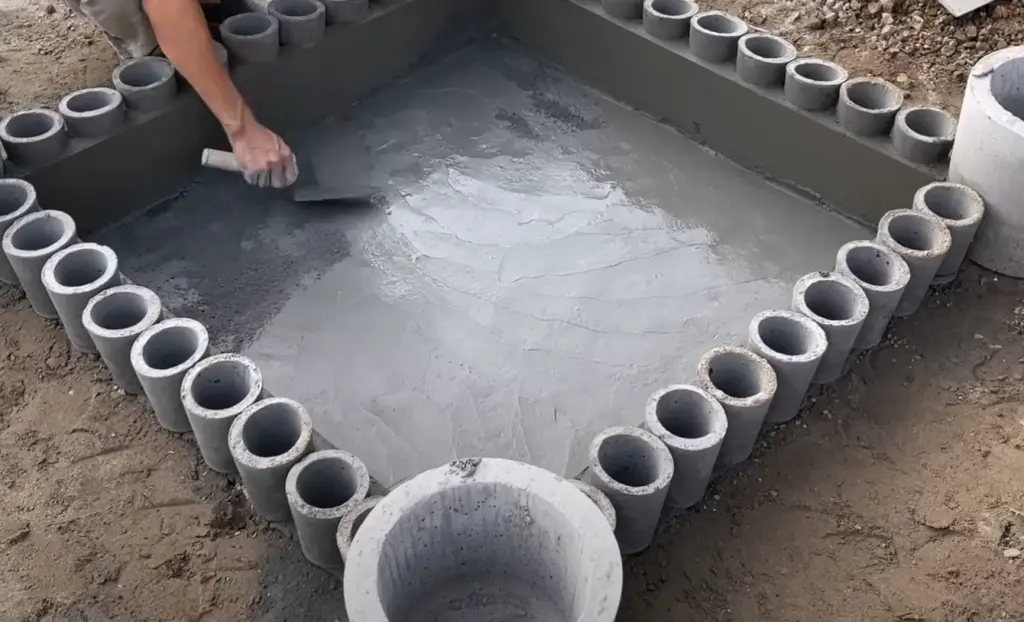
You can then pour the cement into the moulds and let it dry before adding paint or stain for a fun seasonal touch.
Leaf Embossed Concrete Fountain
Make a beautiful, leaf-decorated cement fountain for your garden. Mix the cement into the shape you want and put leaves or other items on it. Let it dry. Then attach a pump to make water come out. This is a unique project that will look great and impress people who visit!
Concrete Square Planter Box
If you’re looking for an easy way to add some greenery to your outdoor space without too much effort, why not consider a square planter box made out of concrete?
All you need is a cement mix, a mould (which can be easily made with wood or plastic) and some paint or stain. Once it’s dry, add your favourite plants to make it look even better.
Concrete Fire Feature
Make your outdoor area much more interesting with a concrete fire feature. All you need is some cement mix, a mould and some fuel to start the fire. This is a great way to create a unique focal point in your garden that will keep everyone warm on those chilly nights.
Concrete Mushrooms
Adding some fun mushroom shapes to your garden is a great way to give it a special touch. All you need is some cement mix, a few plastic mushrooms and paints or stains for colour.
Once they’re dry, arrange them around the garden for an interesting look that will be sure to impress!
Unique Garden Planter Using Concrete
If you’re looking for a unique planter that will add some style to your outdoor space, then why not consider making one with concrete? All you need is a cement mix and a mould.
Once it’s dry, fill it up with soil and plants and you’ll have a stunning planter that looks like nothing else.
Side Table with Concrete Top
If you need a side table for your outdoor space then why not make one with a concrete top?
All you need is some cement mix, a mould (wood or plastic will work) and some paint or stain. This is an easy project that can be done in just a few hours and the results will be sure to impress.
Concrete Garden Globes
Creating garden globes from concrete is a great way to give your outdoor space an eye-catching feature. All you need is a cement mix, a mould and some paint or stain. Once the globes are dry, place them around the garden for an interesting look that’s sure to turn heads!
Modern Concrete Fire Pit
Give your outdoor space a modern touch with a concrete fire pit.
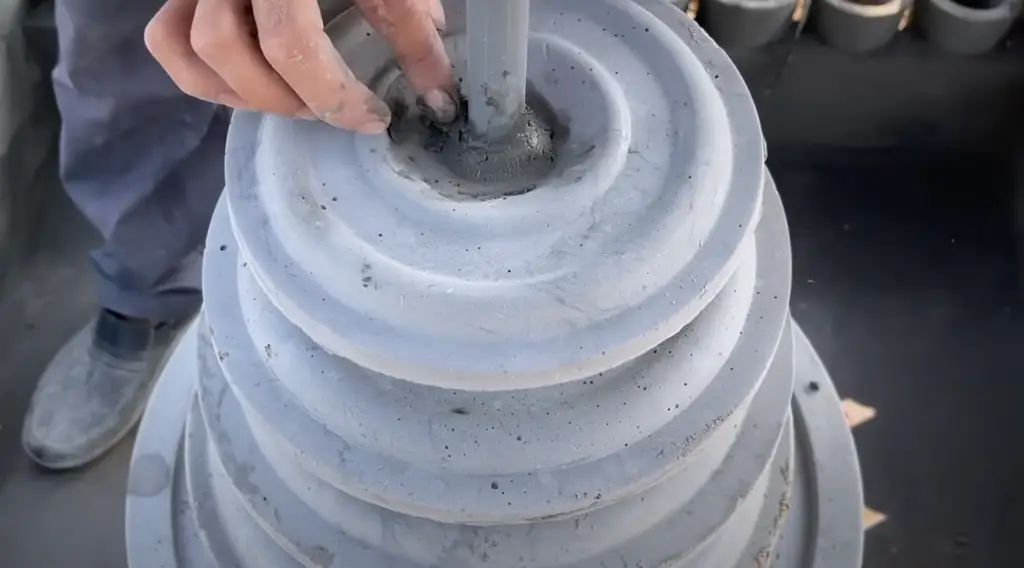
All you need is a cement mix, a mould and fuel to start the fire. Once it’s complete, enjoy sitting around it on those chilly nights and impress your guests with its unique style!
Slender Concrete Vases
Make some beautiful, slender vases from concrete to give your outdoor area a special touch. All you need is a cement mix, a mould and some paint or stain.
Faux Cement Ball Vases
Create some faux cement ball vases to add a unique touch to your outdoor space. All you need is some cement mix, a mould and paints or stains for colour. Once they’re dry, fill them up with flowers for an eye-catching feature that will be sure to impress!
Concrete Garden Statue
Making a concrete garden statue is a great way to give your outdoor area an interesting and unique feature. All you need is cement mix, a mould and paints or stains for colour.
Once it’s dry, place it in your garden as an impressive centrepiece that will be sure to turn heads!
FAQ
What is the best concrete for a garden?
The best type of concrete for a garden is a specially formulated Portland cement mix. This type of concrete will be strong and durable, perfect for outdoor projects.
How do you make a mould for concrete?
Making a mould for concrete is easy! All you need is some wood or plastic to create the shape that you want, such as a planter, fire pit or statue. Once the mould is ready, simply fill it with your cement mix and let it dry.
How can I make my concrete project look more interesting?
Adding paint or stain to your concrete projects can give them an extra eye-catching touch! Simply choose the colours that match your outdoor space and add them to the cement mix before it’s dry.
Can I reuse my mould for concrete?
Yes, you can reuse your mould for concrete! However, make sure that you clean it thoroughly in order to avoid any contamination with other materials. Additionally, if you want to create a different shape each time then you may need to build a new mould.
What is the best way to store cement?
The best way to store cement is in an airtight container in a dry, cool place. Make sure that you keep it away from any moisture or extreme temperatures as this can cause the cement to harden and become unusable. Additionally, always remember to wear protective gear when handling cement.
What can we do with cement?
Cement can be used for a variety of projects around the home and garden. You can use it to create planters, vases, fire pits and statues, as well as many other interesting pieces.
Cement also has a range of practical uses such as building walls, paving driveways and creating pathways.
How do you make easy cement at home?
Making cement at home is actually quite easy! All you need is cement mix, a mould and any additional items such as paint or stain.
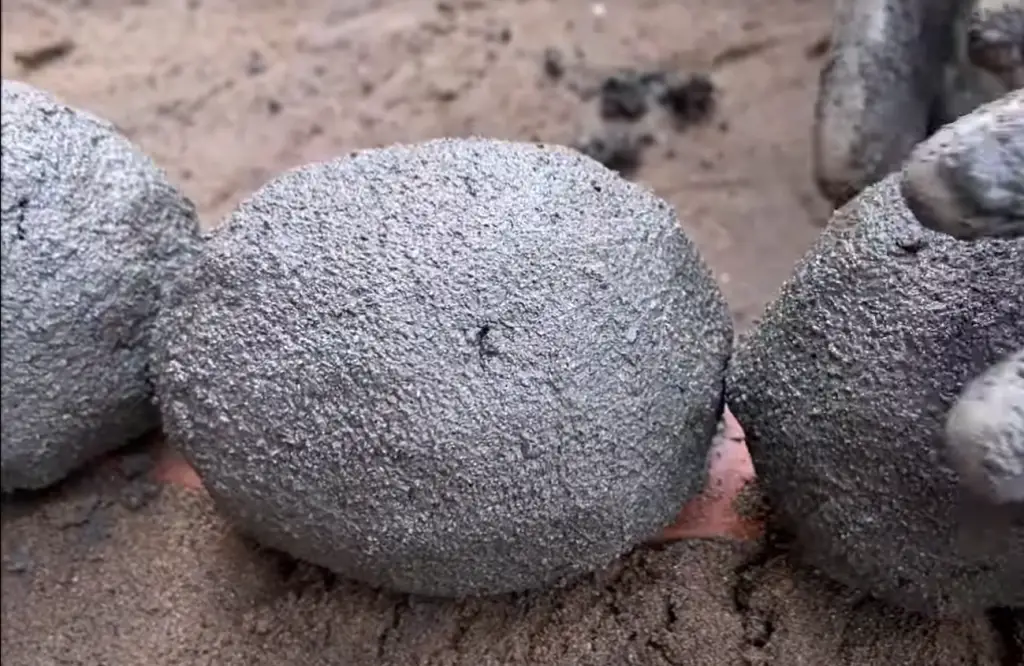
Simply follow the instructions on the pack and add any extra elements that you wish to create the perfect finish. Once it’s dry, your masterpiece will be ready to display in your outdoor space!
What can I make with leftover concrete?
Leftover concrete can be used to make a variety of items. Try using it as an edging for your garden or around your driveway, creating stepping stones or even making a birdbath! You could also use it to build small retaining walls, benches for outdoor furniture. The possibilities are endless!
What is the best way to care for concrete?
The best way to care for concrete is by regularly cleaning it with warm, soapy water and a soft bristled brush. This will help to keep it looking good and prevent any dirt or debris from building up.
Additionally, use sealant on your projects in order to protect them from weather damage and UV rays.
What are some creative ideas for concrete projects?
There are lots of creative and unique ways to use cement in your garden. Try making a pond or fountain, a fire pit, a stepping stone pathway or even a mini golf course!
You could also create abstract art pieces with paint or stains, birdbaths, planters or even an outdoor bar.
What are the benefits of using cement in the garden?
Cement is highly durable, strong and long-lasting, making it ideal for outdoor projects. Additionally, because of its versatility, you can use it to make countless different items in your garden, from practical functional pieces to beautiful sculptures.
Lastly, concrete is easy to work with and can be customised with paint and stain for a personal touch.
What safety precautions should I take when working with cement?
When handling and working with cement, always make sure that you wear protective gear such as gloves, goggles and a dust mask. Additionally, keep it away from children and pets and never use water to clean up any spills.
Finally, be aware of your surroundings and the potential hazards associated with using cement.
How long does cement take to set?
The amount of time it takes for the cement to set will depend on the environment and temperature.
If you’re in a warmer climate then it may take less time, so always make sure to check the instructions on your pack before starting your project.How can I make sure my cement project lasts?
The best way to ensure that your cement projects last is by using sealants and protective coats. This will protect them from the elements and prevent any fading or cracking over time.
Additionally, when working with cement always make sure to use the right tools and follow all safety precautions in order to avoid any accidents. Following these simple steps will help to ensure that your projects stay looking great for years to come.
How to maintain cement?
Maintaining cement is relatively easy. Regularly cleaning it with warm, soapy water and a soft bristled brush will help keep it looking good and free from dirt and debris.
Additionally, use sealant on your projects in order to protect them from weather damage and UV rays. Finally, make sure to inspect your projects on a regular basis to spot any signs of wear and tear.
Why is cement a popular choice for garden projects?
Cement is an extremely versatile material that can be used to create a variety of items. It’s highly durable, strong and long-lasting, making it ideal for outdoor projects.
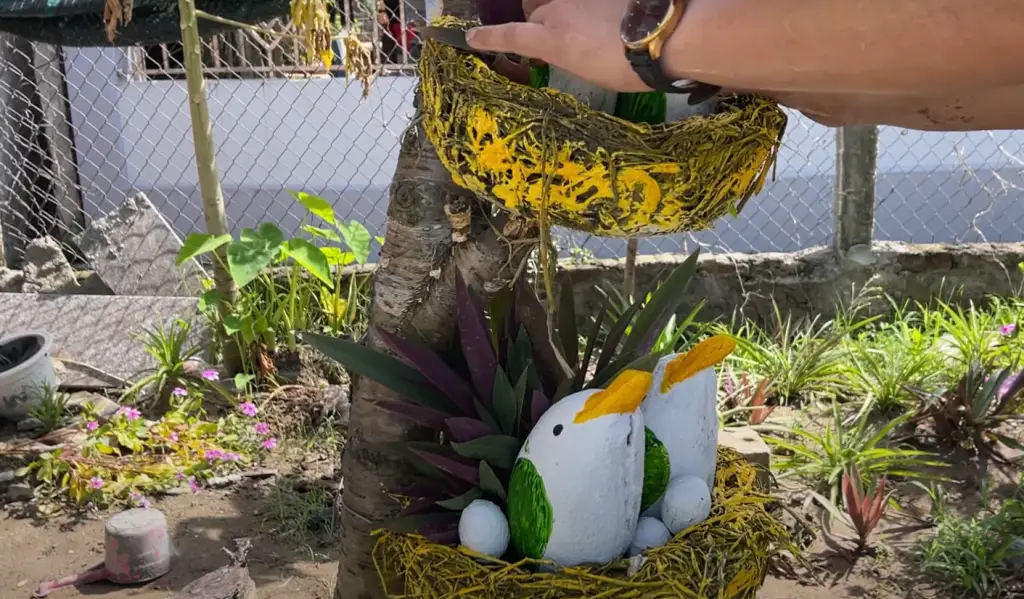
Additionally, cement pieces are easy to personalise with paint or stain to give them a unique look. Finally, it’s relatively affordable compared to other materials, making it a popular choice for garden projects.
What are the disadvantages of using cement?
The main disadvantage of using cement is that it can be difficult to work with and has to be handled with care. Additionally, it takes time for cement pieces to set properly so patience is required.
Finally, it’s not suitable for all types of projects, so always make sure to research and ensure that it is suitable for your needs.
How long does cement last?
Cement can last for many years, depending on the environment and how it is cared for. Regularly cleaning and protecting it with sealants will help to preserve it over time and prevent any fading or cracking. Additionally, checking your projects regularly and making repairs as needed will ensure that they stay looking great for years to come.
Does cement need to be sealed?
Yes, sealing your projects with a concrete sealant is highly recommended in order to protect them from weather damage and UV rays. Additionally, it will help keep dirt and debris away and make cleaning easier.
Make sure to check the instructions on your sealants before use as some may require multiple layers of application.
Does cement need to be painted?
No, painting is not necessary for cement projects. However, if you’d like to add a personal touch to your projects then paint can be used. Make sure to use paints that are specifically formulated for use on concrete or cement in order to ensure the best results.
Additionally, always follow the instructions on the paint package in order to ensure the best results.
What safety precautions should I take when working with cement?
Always make sure to wear protective equipment such as gloves, a mask and eye protection when handling cement. Additionally, make sure to read all instructions carefully before starting your project and use the right tools for the job.
Finally, if you’re using cement mix, always make sure to wear a dust mask and gloves when mixing in order to avoid any irritation. Following these simple steps will help ensure your safety when working with cement.
Do I need to use a cement mix?
Cement mix is not necessary for all projects, however it can be used in order to make the cement more durable and strong. Additionally, some projects may require the use of a special type of cement mix.
Make sure to read the instructions carefully before starting your project in order to determine if you will need to use cement mix or not.
Does cement need to be cured?
Curing is not mandatory for all projects, however it can help strengthen the cement and make it more resistant to weather damage. Additionally, curing requires time and patience so make sure that you have enough of both before starting your project. If you do decide to cure your project, follow the instructions carefully and make sure to use the right materials in order to get the best results.
Do I need special tools to work with cement?
You will need some basic tools such as a trowel, gloves, safety goggles and a level in order to work with cement. Additionally, you may need more specialised tools depending on the project that you are working on.
Make sure to research your project before starting so that you can be prepared with the right tools. This will ensure that you have a successful project and are able to complete it in a timely manner.
Can I use cement outdoors?
Yes, you can use cement outdoors for projects such as walkways and patios. However, it is important to make sure that the project is properly sealed in order to protect it from weather damage.
Additionally, you will need to make sure that your outdoor project is located in an area that gets plenty of drainage so that the cement does not become waterlogged. Following these simple steps will help ensure that your outdoor project is successful.
Can I use cement indoors?
Yes, you can use cement indoors for projects such as countertops and wall accents. If you are planning on doing this, make sure to seal your project in order to protect it from dust and other contaminants that may find their way into your home.
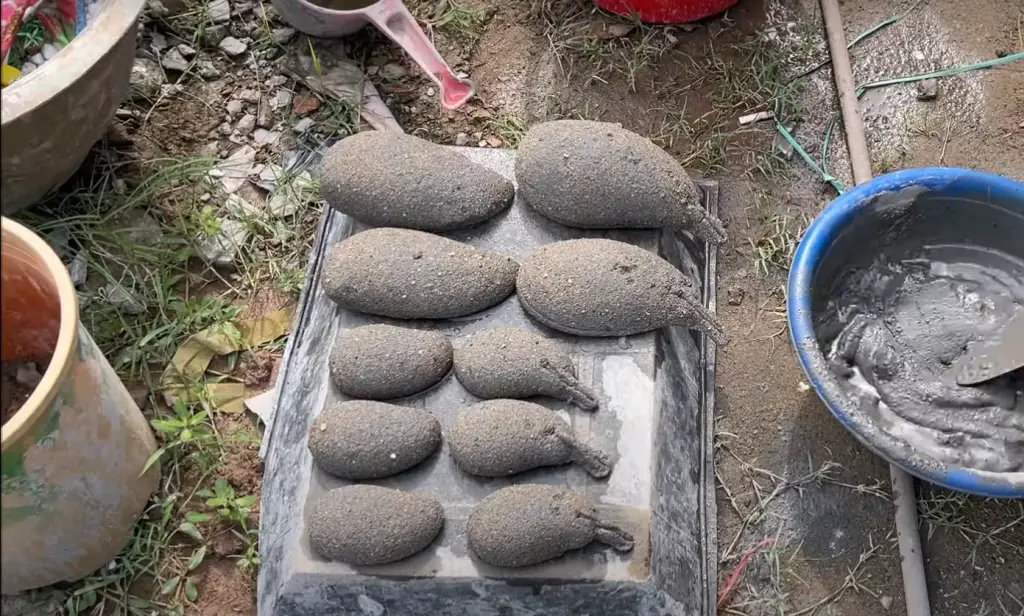
Additionally, make sure that the space you are working in is well ventilated in order to avoid any fumes or vapours from the cement. Following these simple steps will help ensure that your indoor project is successful and safe.
Can I use cement in the winter?
Yes, you can use cement in the winter, however it is important to make sure that your project is properly insulated and protected from extreme cold temperatures.
Additionally, make sure that all of your tools are dry before using them as they could become damaged if exposed to moisture or freezing temperatures.
Finally, be aware of the weather conditions before starting your project as this could cause delays in the completion of your project.
Useful Video: AMAZING CEMENT IDEAS – Garden Design And Decoration – BEAUTIFUL and EASY
Conclusion
Bringing your garden ideas to life doesn’t have to be a laborious task. With the right techniques, materials and creativity, the possibilities are endless. Whether you want to make raised beds in your backyard, increase your crop yield with vertical gardening or plant some beautiful new flowers, it is achievable with a little bit of planning and determination!
Take these tips and use them as starting points for getting your dream garden off the ground. Dream big but don’t forget about the small details. If you keep these checklists in mind and have fun through the process, you will find yourself not only improving the appearance of your home but also discovering a new appreciation for nature within you along the way. Now go get inspired and create something beautiful!










Leave a Reply
View Comments